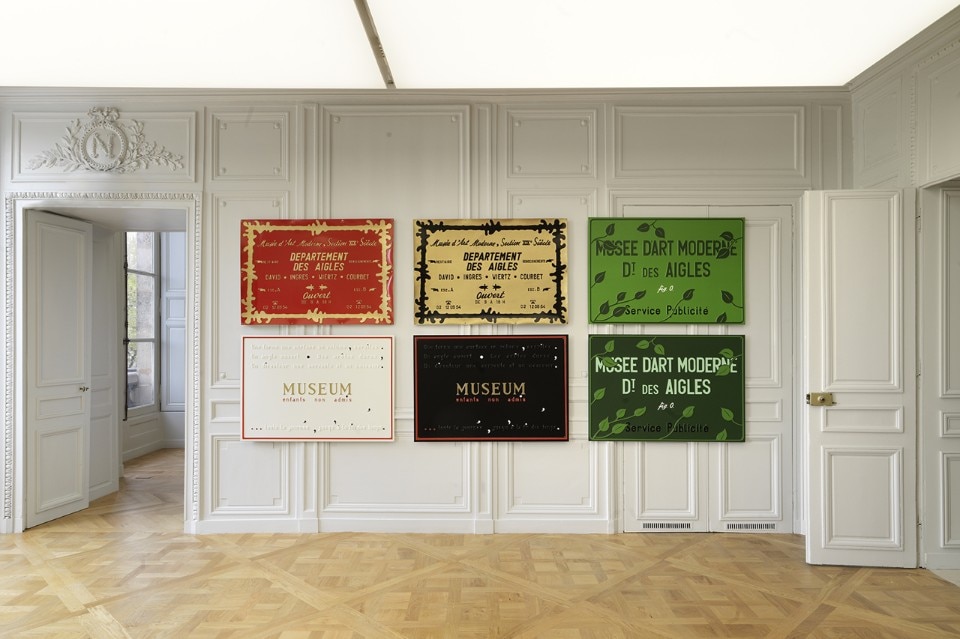
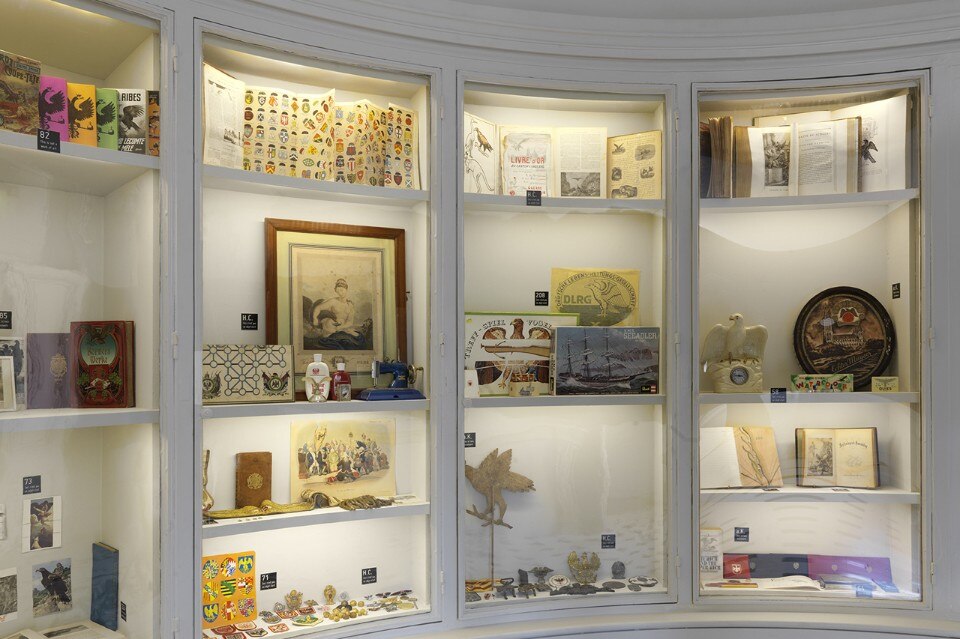
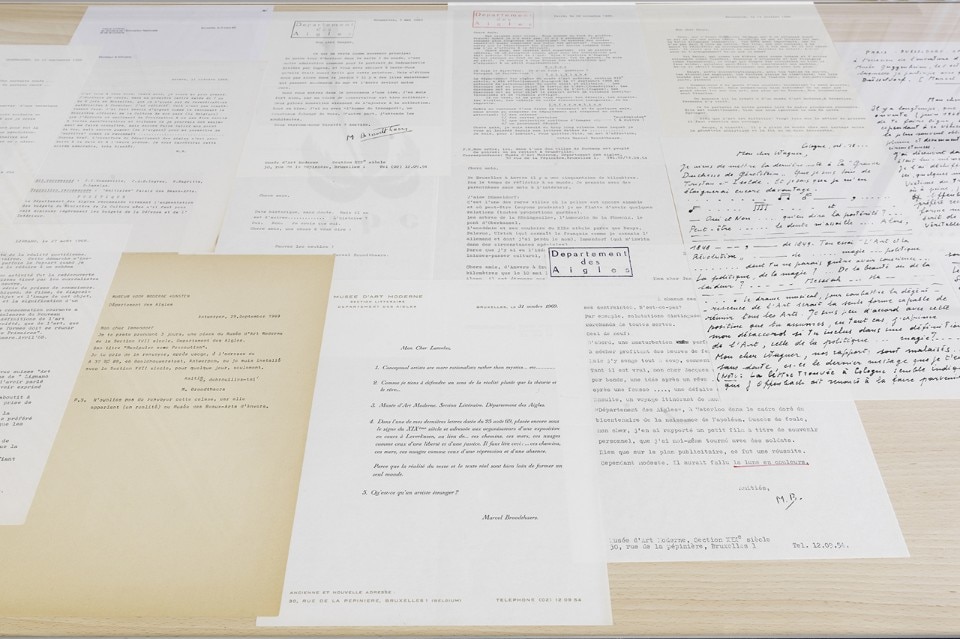
J’aimerais controler le sens de la culture was a huge undertaking and reappeared in the odd passage in his Lettres Ouvertes to colleagues –from David Lamelas to Immendorf – and to institutional figures – from the Belgian Ministry of Culture to the Berlin senators – in a post-1968 ambience in which the pithy political sign questions the organisation, fruition and perception of the artistic event. Broodthaers turned up at the Palais des Beaux Arts in Brussels with a camel and invented museums that prohibited entry to children.
The very opposite of today’s tour-operator art, here post-prophetically parodied by his 1975 Monsieur Teste, a small doll reading L’Express in front of a large tourist-agency poster of a tropical beach, the man intentionally turning his back to the view.
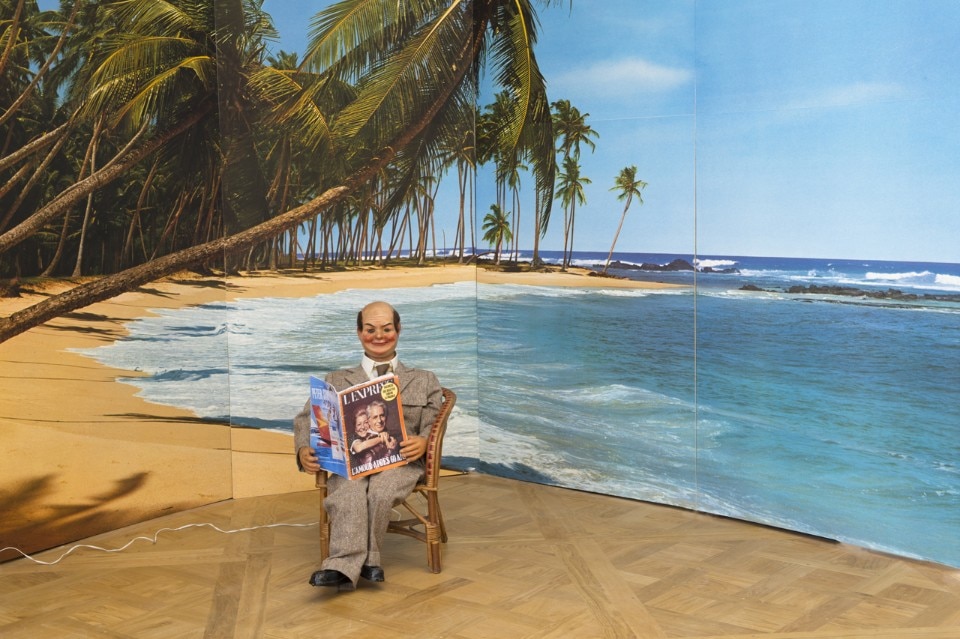
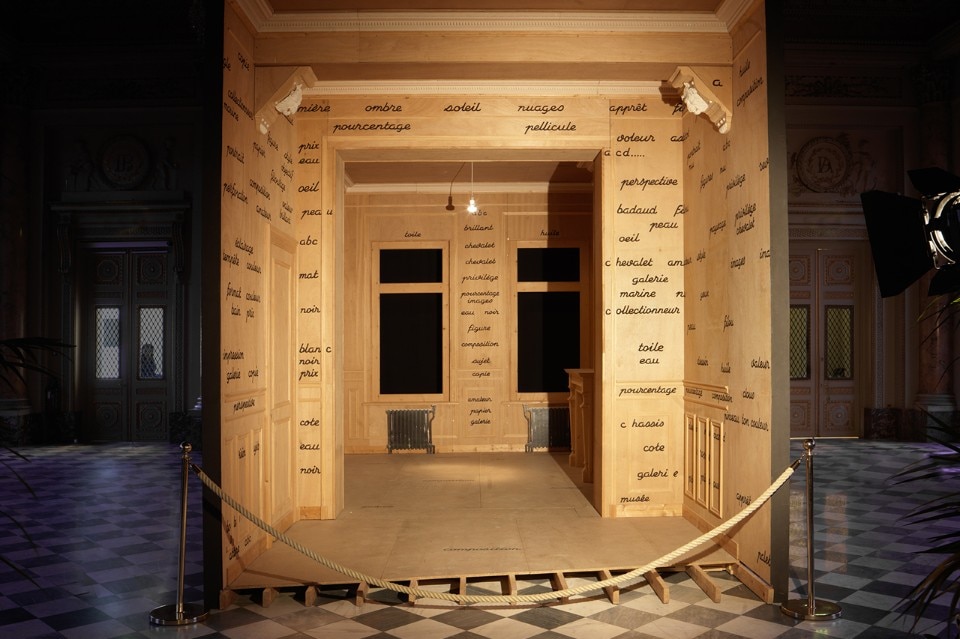
In this exhibition, Chiara Parisi, working in close collaboration with Maria Glissen Broodthaers and Marie Puck Broodthaers, has retained unaltered the critical presence and poetic inventions that are key to understanding the artist but has also embarked on the testing challenge of reconstructing some of the “sections” of the Musée d’Art Moderne, Département des Aigles of which the artist proclaimed himself director and conservator.
This visionary work continues to question the art system, demolishing it from the foundations. There are obsessive and precarious aspects and a fair helping of domesticity and “officialness”, from its presentation in his Brussels apartment to the 1972 Documenta V in Kassel where the artist focused exclusively on the advertising side of the artwork Section Publicité, a store of materials and figures that has strongly inspired and informed the practices of generations of younger artists.
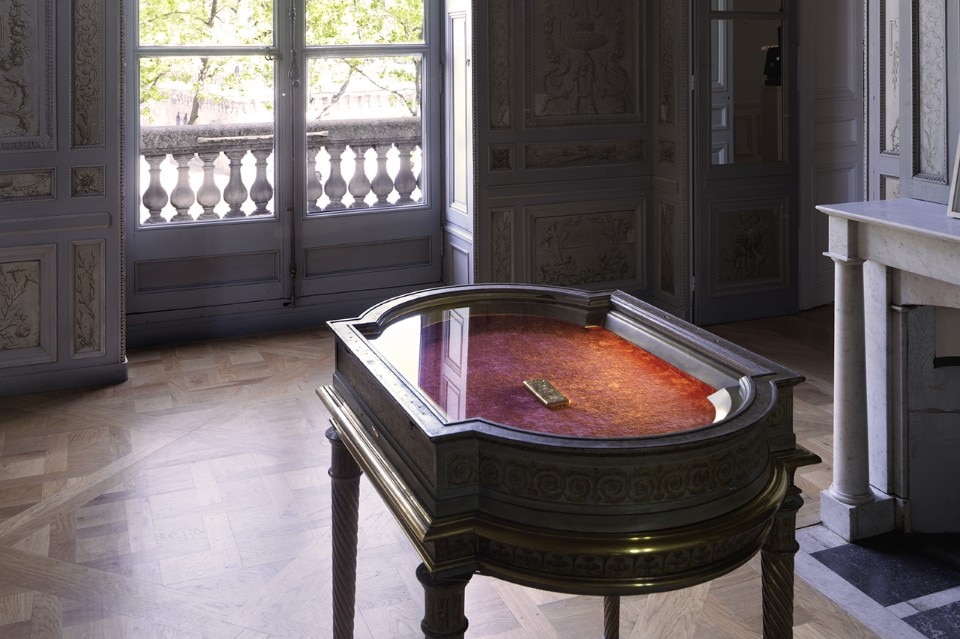
It is no accident that the gold lingot chosen to present the Section Financière here at the Monnaie belongs to the artist Danh Vo, whose research is closely linked to the use of gold and settings similar to those of Broodthaers, underscoring the physical permanence of this continuity.
Presented on the cover of the 1971 Cologne Art Fair Catalogue and with a totally fictitious value far removed from the market one – twice the price because a work of art – this gold bar is not a work but a stock index, a portable monument to the exploded equivalence of blue-chip art and with only today’s financial connotation. It marked a turning point in the history of the artist’s very personal Musée, put up for sale on account of bankruptcy, but prompts several reflections. As do the transport crates, palms, editions and reconstruction of the splendid Salle Blanche, as presented by Pontus Hultén in Paris in 1975 in the early history of the Centre Pompidou.
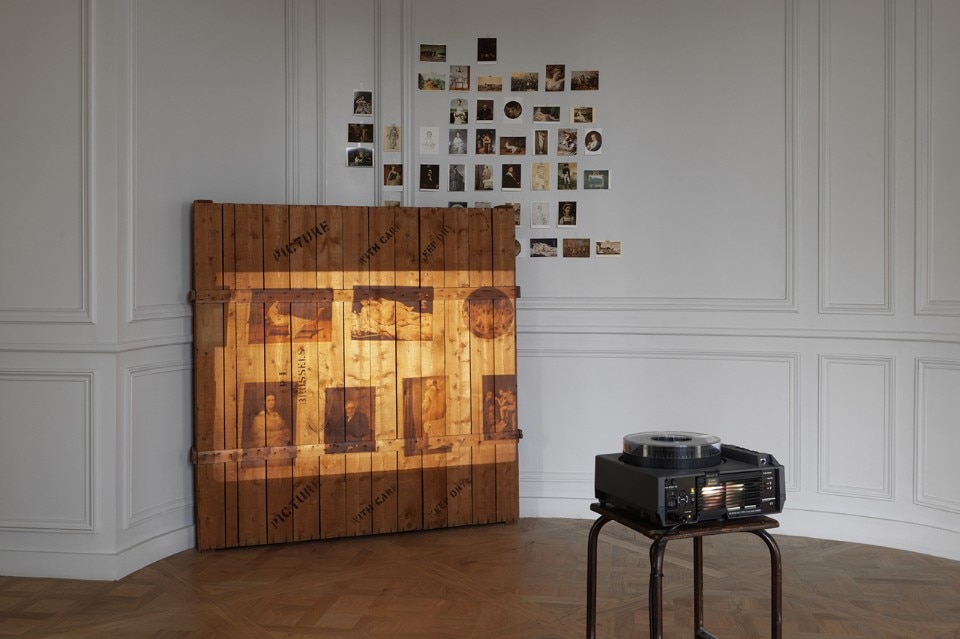
Visitors move through a world of critical poetry or, perhaps, a manifest declaration of incompatibility with the system. What is moved and evoked here begins with the reconstruction of a room in his home and unconsciously opens a window on the extraordinary loans of the showcase and multi-billionaire museums of our times.
Broodthaers used to say that his tender and poetic museum of “resistance”, with postcards of masterpieces, projected slides and crates loaned by the Menkés transport firm, was born out of circumstance and the concept really came afterwards. This is harder to believe today now that this subject – the museum business – has convinced the public imagination that it is above criticism; or, more probably, these are the starting points for a clearer understanding of the art of the near future.

